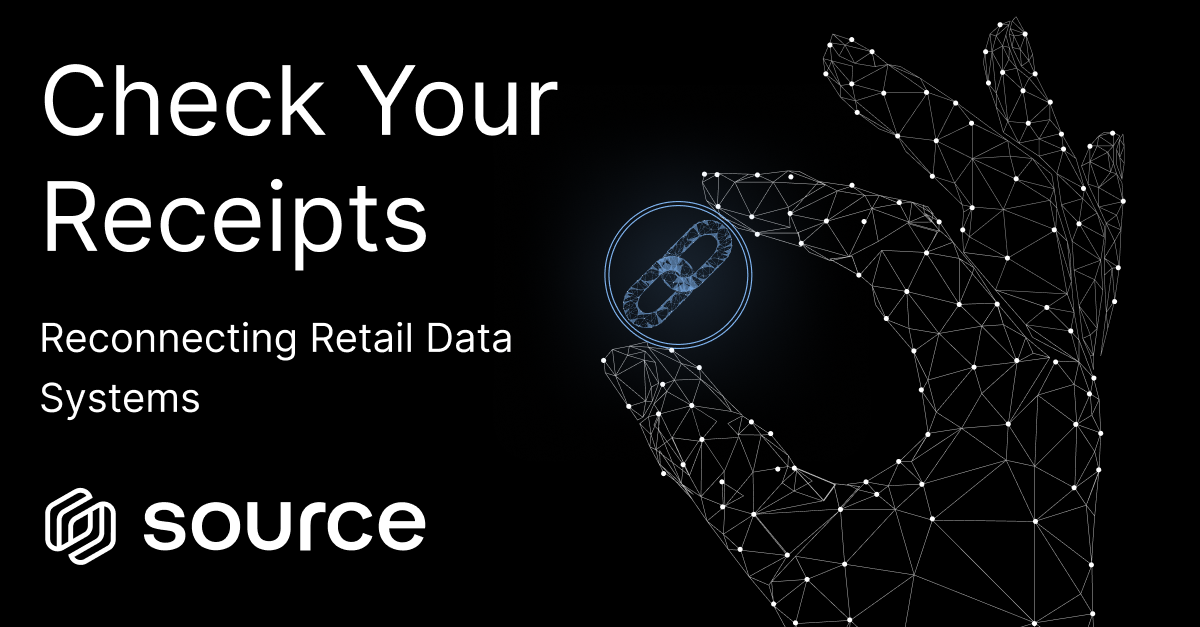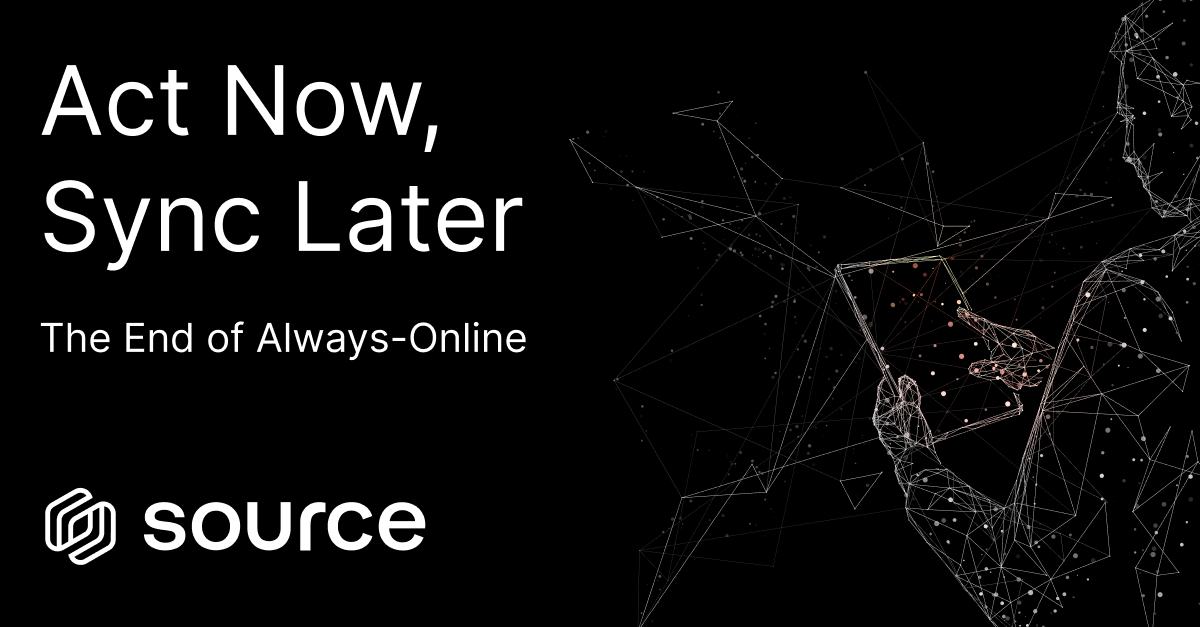“It says we should have one in stock. Let me check in the backroom.”
We’ve all waited at the checkout while the cashier fumbles through inventory looking for that one item the computer says they definitely have. We’ve all experienced the frustration and disappointment when it turns out not to be correct, as the item didn’t arrive in this morning's stock delivery, and that they’re not sure when they’ll be getting more.
Retail supply chains are beasts with hundreds of moving parts. Warehouses, shipping, logistics, in-store systems, third-party vendors - each with its own data, tools and timelines that rarely sync smoothly. Each competing for the value stored in the data layer. All needing to stay compliant whilst trying to integrate with other vendors domestically and globally. Orders that must be tracked and traced, inventory synced and customers updated across myriad fragmented platforms. It’s a problem that manifests itself daily on the shop floor, and one that we need to solve.
Fragmented Systems and Legacy Tech
It’s a mess born of necessity. Most retailers operate on legacy software systems and infrastructure layered with vendor-specific APIs. They use webhooks that are brittle, with no guarantee data arrives in the right order or correctly. Their inventory, POS, warehouse and ecommerce systems all speak a slightly different language - and that language can differ from their shipping partners.
Developers are forced to build a slew of bespoke funnels and custom ETL pipelines to move data around and, should one party update their schema or miss a sync, the system can drift out of alignment - causing inventory and delivery problems in stores, leaving customers frustrated at the tills. These problems, with different legacy infrastructure struggling to integrate, are replicated across many other sectors, and is why a new approach to data management is a new approach to the systems of the world itself.
Better retail integration is far more than just about giving the customer what they want. It’s about giving them more than they could possibly imagine - at every layer of the ecosystem. Vastly improved efficiency means less overhead and, theoretically, much lower prices. It means better forecasting and fuller shelves, and less customers walking away unhappy. Better data management reduces wastage, automates vendor coordination, and helps with cross-border compliance and integration.
If the right applications are built with our stack, this doesn’t just apply to large corporations, but individual retailers too. Real-time inventory reconciliation and shared logistics wouldn’t just be the preserve of those who can afford their own IT teams, but for Mom ‘n’ Pop stores too. Imagine a niche hobby shop selling specialist products across multiple different websites as well as their own store. Manually, things can get missed, stock can get double-sold through two different vendors if they’re unlucky enough for two listings to be bought within close proximity, and they may find they let someone down. A potential application built with Source Network could automatically sync data from those vendors and ensure that the moment one listing is sold, the other from a different vendor is taken down.
That said, even a large chain like Walmart would struggle to integrate their inventory systems with a Japanese distributor with significant technical and legal overhead. But with schema-translated interoperable data, their Japan supply chain can plug into their analytics dashboard in the US effortlessly. This then means that potential product rollouts, supply chain efficiencies, and shipping partnerships can be done at speed - at least at the data layer. As it stands, vendors find it difficult to sell other people’s products, even when they have an active market for it while their supplier doesn’t. A globally integrated data layer that can scale, which operates underneath current infrastructure, and maintains compliance and privacy, makes potential partnerships as easy as they are effective.
Data Management on the Shop Floor
Source Network is the wiring for this data layer. Through our suite of tools - DefraDB, LensVM, SourceHub and Orbis - developers and IT teams can build inventory, logistics, and retail software that puts products on the shelves. Source Network’s primitives are designed to be fully interoperable with any environment, so the legacy systems that dominate retail are no issue. DefraDB is edge-native and means that every device - from the POS machine to handheld scanners to warehouse servers - can manage data on-device and sync it with vendor or logistic systems they’re collaborating with anytime connectivity is available. No cloud dependence, no waiting on a third party to sync their updates, and no downtime.
P2P replication through edge networks means that the moment a banana is scanned at the checkout, that update is proliferated throughout the network. SourceHub can imbue these sync updates with cryptographic auditability so every price update and every shipment has a cryptographic trail, reducing disputes and increasing trust between disparate partners.
Schema mismatches are also irrelevant thanks to LensVM. A bi-directional data translation tool, it lets a logistics app, warehouse system and ecommerce backend communicate without rewriting the logic. Previously expensive collaborations between corporations with their individual architectures now become possible without resort to third party custodians, and smaller shops can integrate with larger global networks while remaining sovereign.
Sharing is Caring
That last part is key, as one of the major roadblocks to collaboration between retailers is the value of their customer data and the integrity of their supply chains. Most data-sharing systems are too carte blanche - operating at the file, table or API level - and, for them not to be, significant effort is required with bespoke ETL pipelines to create field, row or queryable content. This is an issue. If a retail chain wants to collaborate with an AI startup, they need to be careful about sharing the training data without violating GDPR. A small brand wanting to get shelf space in the supermarket might be asked to integrate with their analytics dashboard, which may expose their suppliers and other sensitive commercial information. International partners coordinating shipping often trust a cloud service with their data to do so, exposing them to attack vectors.
What’s needed is the ability to collaborate without exposure. To provide field level access with policies attached in a relational structure. Not “share this” but “share only column C and only with partner X and absolutely only when condition Z has been met”. What’s more, you want to be able to trace the usage of that data going forward, and follow its path through their systems. You want to integrate data with partners without forcing infrastructure systems upon one another. This trustlessly-managed mutual auditability helps collaborations run deeper. The ability to preserve privacy about the data that underwrites the value of your company whilst also putting that data to constant, active and practical use is at the heart of what Source Network’s tools are for. This is the power of distributed networks: control without authority and trustless truth.
Structure Data at the Source
Our data management stack is the interoperable architecture to solve inventory systems globally when developers begin to build the necessary apps with our tools. Once data is structured, verifiable, shareable and sovereign by default, then retail is less competing walled gardens and rather a giant programmable network - one that protects commercial and user privacy. Sovereign data management that is accessible at scale can create cheaper and smarter retail everywhere, for customers and proprietors.
The same can be said about the data in many other global systems: energy, transportation, agriculture, manufacturing, even video games - all which we have written about before. We are in an era where the next great advance in our social welfare will come when we manage data better, because it is data that now drives these systems and how they operate (and how they make money). Source Network provides the rails for developers to build compliant, interoperable, edge-native and sovereign data management applications that remove centralized intermediaries and make fragile integrations a thing of the past.
It doesn’t matter if it's a retail logistics platform, an energy grid, or a factory, the principle is the same. Structure data at the source, give it integrity, traceability and verifiability by default, and allow it be shared at the fine-grained permission level between different parties who can then work together without needing to trust each other, because they never have to surrender control. If we do that, creating resilient local-first edge-native apps with a global reach, then we can unleash the potential of the global economy, and fill the shelves with wonders.
 Source Team
Source Team

